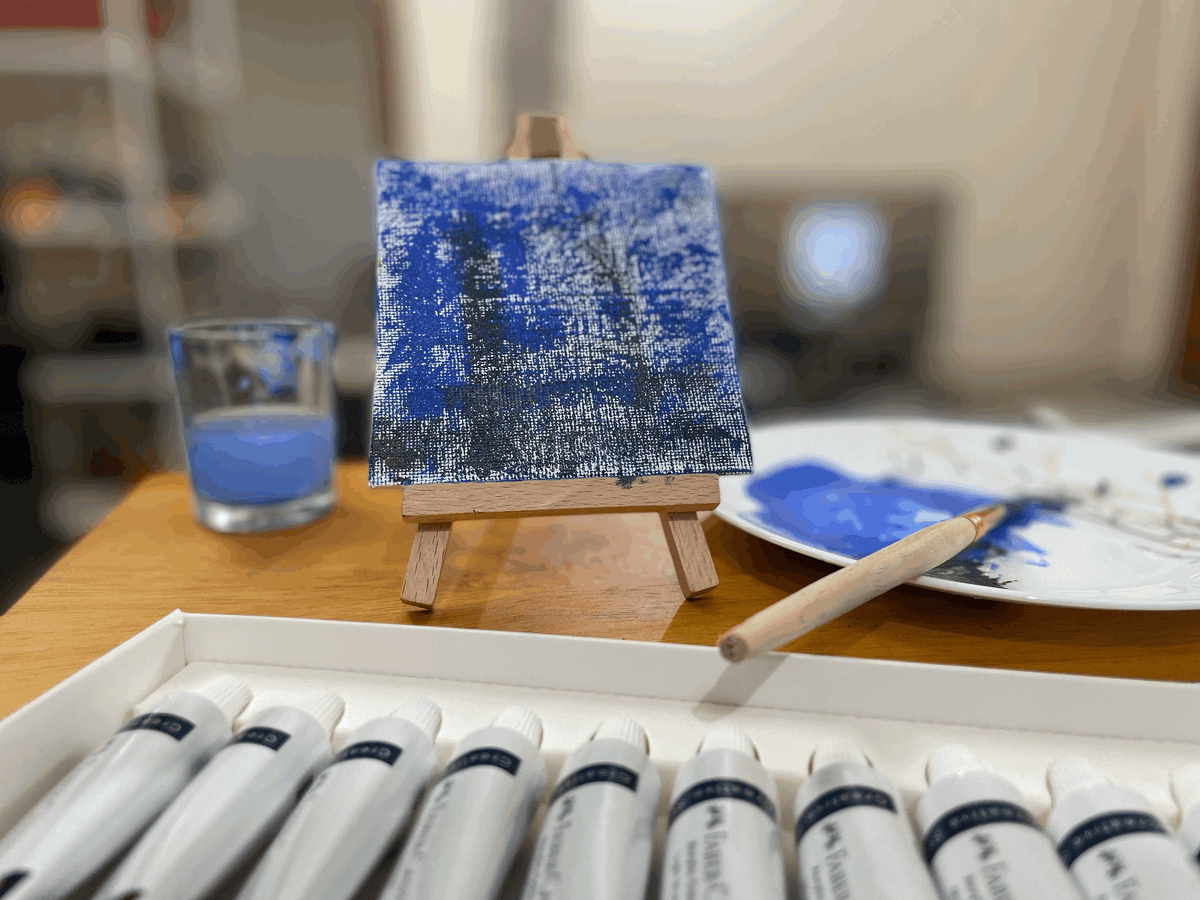blank canvas

At 6:20pm, the studio got empty again. The doors were shut once more, with dim light finding it's way. He stood at his easel, gazing at a blank canvas. As his thoughts were yet to gather, time ran slow for him. An hour became a year, and the canvas changed colours.
Despite a whirlpool of thoughts in his head, the canvas remained blank. Solitude is often the draped to cover our loneliness, he thought, contemplating the empty studio that echoed with silence. The studio walls now hold a series of blank canvases.
It was 15th century, Uccello's Sanit George and the Dragon popularised the use of canvas.The scarcity of canvas materials piqued the curiosity of many artists. A cunning theif got hands on an empty canvas from Uccello's own backyard, and painted with pigments sourced from the forest. The woman depicted in the portrait was said to be inspired by a reflection he had witnessed in a nearby lake. The incomplete portrait found its place hanging by a tree on the banks, while the thief's body was later discovered near the lake.
The passage of years etched tales into the very branches overhead. They cradle the secrets, whispering them through generations. The portrait, later named The mermaid of the Haraz, became the pride of Yemen.
While the painting had its own journey across the world, in the 17th century, the mermaid has slowly faded with time. A young cellist, with only limited funds, acquired an almost empty canvas in an auction to make herself known in arts world. Enlisting the help of her friend, she commissioned a portrait of herself playing the cello. The painting was given the name "Vioncelistul Corvin" in homage to her unforgettable performance at Corvin's Castle.
Her aspirations of drawing crowd to her solo cello performances materialized soon. As she played before a live audience, reveling in the joy of her success, her artwork fell victim to an unknown thief. Vanished into the shadows of time, the cellist lost her vanity. The canvas became dull and emptier, when found a century later in a museum.
Emma, the young art historian, found herself intrigued by the faded canvas, revealing subtle traces of Orchil and Cochineal — materials that, like whispers from centuries past, were also continents apart.
Her research uncovered a series of faded portraits over centuries, arguably crafted by the same artist. The captivating women depicted in them were never believed to have existed. Nor the Mermaid of the Haraz, neither the Vioncelistul Corvin.
As she displayed the faded portraits in an abondoned church, she had a visitor in his 40s. He strolled through the hall of empty canvases, capturing his recollection of each portrait in his little sketchbook.
Continuing through the museum, he encountered a new empty canvas on the easel. Patiently awaiting the sunset at 6:20 pm, he began to paint a portrait of Emma.



